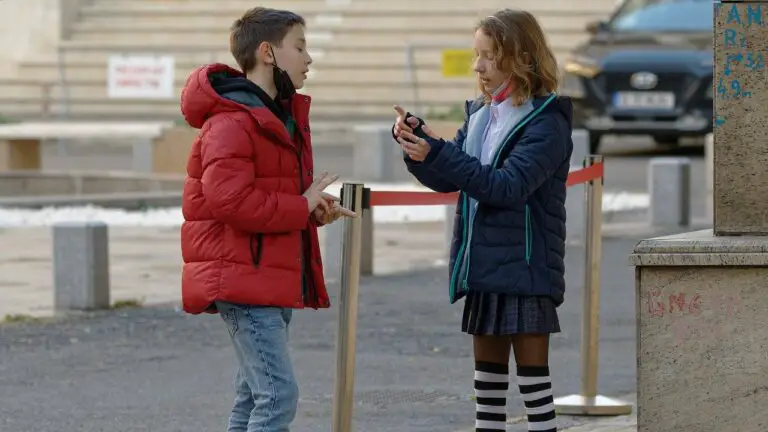One of the most effective learning strategies for students of all ages is acting out situations in a controlled environment. There are three main methods for doing this: dramatization, simulation, and role play. For teachers, it’s important to understand the differences between the methods and know how to apply them effectively in the classroom.
Dramatization is the enactment of agreed, scripted dialogue and/or action with an end product in mind. Simulation is unscripted and requires students to act as if they were in a certain scenario (e.g. ordering food at a restaurant), while role play takes this a step further and has students taking on the role of another person or character.
The makeup of the class ( size, behaviour, maturity and ability) and the intended learning outcomes determine which method will work best. Keep on reading to find out how to decide on a method and get the best out of it.
Differences between dramatization, simulation and role play
All three methods fall under the general category of acted speaking activities. They’re popular in EFL/ESL classrooms because they encourage language production, include an active, physical experience, and are generally exciting for students.
Dramatization is the most structured of the three. It involves the students/actors following a script of dialogue, and sometimes accompanying actions, as if in a play or film. In fact, performance of an end product is often the goal and motivation, with opportunities to display the dramatization to friends and family, or create a short film.
Writing the script is another learning tool. While a teacher can provide a pre-made script, students might enjoy coming up with their own dialogue, and this offers plenty of opportunity for writing practice and vocabulary acquisition.
Simulation has students act as themselves in certain scenarios where they have to interact with others to resolve a problem or come to an agreement.
Typical examples include ordering food at a restaurant, asking for directions, and job interviews. It’s a staple of most EFL/ESL classrooms and often confused with role play.
Role play allows students to put themselves in the shoes of a different person. The opportunity to behave differently to normal and look at the world through an alternative perspective can be liberating.
It’s also fun, as there are no real consequences for their actions. Plenty of learning can take place when a student isn’t afraid of causing trouble by doing something out of the norm. A parent telling off their child, or a superhero saving the city are both fun examples. They involve using language outside what the students would encounter in their daily life.
For more details on why you should use role play in your classes, check out my article on the topic.
Choosing the right method
Each method comes with its pros and cons for different situations. The two most important factors to consider are class makeup and intended learning outcomes.
Class makeup refers to the size, behaviour, maturity and ability of the students in the lesson. A class of thirty excited six-year-olds at the beginning of their English journey has different needs to a pair of shy, advanced-level adults.
Intended learning outcomes are what you hope to gain from the activity. In some cases, a teacher will want to focus on the use of specific vocabulary, while in others, fluency and confidence may be the target.
You can adapt all three methods for most situations, but here are some general guidelines.
Dramatization:
- Focus on specific vocabulary (with pre-made scripts or guided script writing).
- Long-term projects over several sessions with an end product (film, performance, etc.).
- Groups of 3-6 – Dividing a large class into groups for the duration of the activity is a must.
- Best for students who need guidance and direction to control their behaviour.
- Better for groups where a few students tend to dominate – the scripting allows other students to participate equally.
- Works at all ability levels, although other methods are more effective for advanced students.
Simulation
- Focused vocabulary based around a theme (restaurants, airports, job interviews).
- Specific grammar targets (e.g. past continuous, modals for advice).
- Groups of 2-3 – partner work is often best in a large class scenario. With one-to-one classes, the student can interact with the teacher.
- Great for young children who like to act, but struggle with the concept of taking the role of another person.
- Good for shy people who don’t feel confident performing in front of others.
- Works at all ability levels
Role Play
- Great for increasing fluency and building confidence with previously learned language.
- A wide range of vocabulary can often be elicited organically.
- Groups of 2-4 – it can get unruly in a larger classroom, so choose groups wisely.
- Perfect for energetic and creative students who like the freedom to express themselves.
- Can allow less confident students to come out of their shell.
- Works best for students who are confident making their own sentences, as there is very little structure.
How to get the best out of each activity
When one of these methods hits the mark, it’s a wonderful experience for both teachers and students. However, there’s a risk of things going wrong. Due to the dynamic and creative nature of the activities, participation and behaviour issues will always arise, and as a teacher, you need to know how to deal with them.

To keep things on track, the class needs to retain an equilibrium between student agency and behaviour. The centre of this equilibrium will be at a different position depending on the class. Larger classes typically have to focus more on behaviour control at the expense of student agency, while smaller classes allow a little more freedom.
Before starting any acted speaking activity, establish expectations. As these activities often go beyond the limits of what is normal in a classroom, students may get confused about what they’re allowed to do. With adults, gentle reminders are enough. With children, it’ll likely need a brief talk, clearly defining what is acceptable and what isn’t.
Some students will get excited. They’ll get silly, and they’ll take it too far. Especially at first. In dramatizations where you’re making a film, expect giggling, distractions from those not being recorded, and plenty of outtakes. In role plays, the excitement can get too much, and students stop using English because it slows down their interactions.
All of this is normal, and not the end of the world. When things go too far, though, behaviour management comes into play – stop the activity and remind them of the expectations (and the consequences of not fulfilling them).
For more on how to manage role play activities with different age groups, check out my articles Teaching EFL/ESL to Teenagers & Adults With Role Play and How to Teach Children EFL/ESL With Role Play: Best tips.
On the other side of the coin, some students will be reluctant to take part. They may find role plays “childish” or be too shy to express themselves. This is also normal.
To increase participation, frame the activity as low-pressure. Let them know they don’t have to be perfect, and nobody is going to mock them for what they do. Often, an element of trust needs building over several sessions before introducing these activities. For those who think it’s childish, show them you’re not above getting involved. When they see you acting, they might decide it’s not so silly after all.

Another thing to consider is the teacher’s role. Provide the language when needed, but avoid forcing it on students or repeatedly correcting, as this can get frustrating. Be a resource, not an instructor.
I’d recommend keeping to the side and monitoring, only intervening to help with language where needed and ensuring everyone participates. Sometimes, when a simulation or role play struggles to get going, you may need to offer some suggestions, or come in as another character, but be wary of doing this too often as it removes student agency.
If you’re looking for more tips on how to avoid problems with role play, I have just the article for you: 5 Problems to Avoid With Role Play in EFL/ESL + Solutions.
Enjoy the drama
Whichever method you choose, it should be an exciting, memorable experience. Not only is it motivating for students, but it’s a hugely effective teaching method. However, if it stops being fun and becomes more of a battle, stop.
Personally, I’ve made dozens of great films with my students, and enjoyed a lot of simulations and role plays which have left us all laughing and learning at the same time. They’re some of my favourite activities.
I’ve even taken it to the next level with some classes, moving on to table-top role-playing games (think Dungeons & Dragons) where the fun and learning climb even higher.
For more information and guidance on role play in the EFL/ESL classroom, check out all my articles on the subject:
Why All EFL/ESL Teachers Should Use Role Play Activities
Dramatization vs Simulation vs Role Play: Guide for EFL/ESL
5 Problems to Avoid With Role Play in EFL/ESL + Solutions
How to Teach Children EFL/ESL With Role Play: Best tips
Teaching EFL/ESL to Teenagers & Adults With Role Play
5 Awesome EFL/ESL Role-play Scenarios for Teens (+ tips)
5 Exciting EFL/ESL Role Play Scenarios for Kids (+ tips)
5 Engaging EFL/ESL Role Play Activities for Adults (+ tips)









